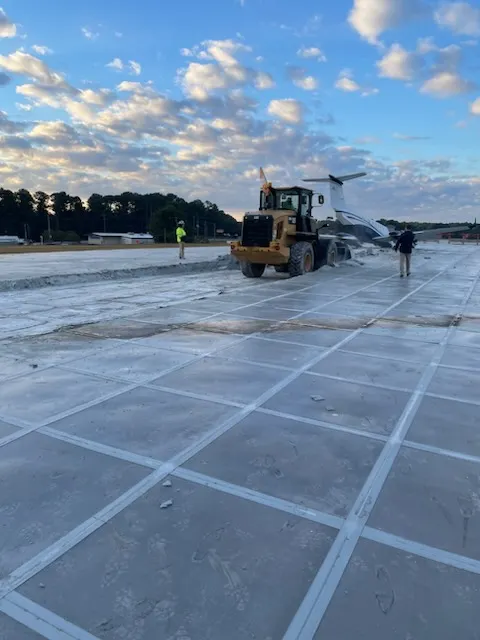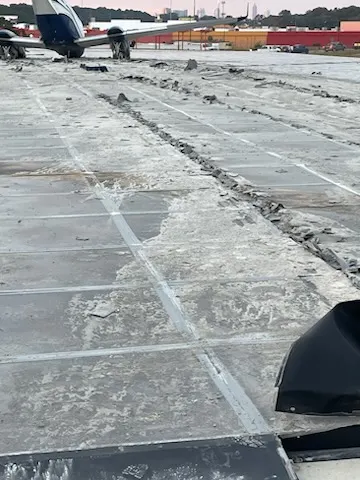Boosting Runway Safety
On Jan. 19, 2010, a Bombardier regional jet overran Runway 23 at West Virginia International Yeager Airport. Unable to take off, the commercial flight carrying 34 passengers and crew rolled into a bed of crushable material at the end of the runway — a key safety measure.
The Engineering Materials Arresting System, or EMAS, stopped the plane from a precipitous drop-off of several hundred feet. It sustained only minor damage, and none of the occupants were injured.

Why EMAS is important
Aircraft overshoots like this are rare yet high-risk occurrences. Without proper safety measures, overruns can result in significant damage and/or fatalities. That’s why EMAS is a major safety enhancement. Airports can install these beds at runway ends — called runway safety areas — to “catch” undershooting, overrunning or veering aircraft.
How it works and where it’s needed
The tires of the overrunning aircraft sink into the lightweight material, and the aircraft rapidly decelerates.
Think of it like a runaway truck ramp along a steep mountain highway; an EMAS can stop an aircraft traveling up to 80 miles an hour.
Airports install EMAS when they cannot feasibly meet the FAA’s standard runway safety area dimensions — often 500-foot wide and extending 1,000 feet beyond each runway end — because of a lack of available land or existing obstacles. Many runway safety areas are constrained by bodies of water, highways, railroads, populated areas, and severe changes in terrain.

The scope of EMAS
The FAA began conducting research on EMAS in the 1990s with public and private sector partners to improve safety at airports where the full runway safety area cannot be built.
The first EMAS system was installed in 1996 at New York’s JFK International Airport. The system has stopped 22 overrunning aircraft carrying 432 crew and passengers since then.
EMAS has performed successfully every time, resulting in no loss of life and minimal damage.
EMAS is now at 122 runway ends at 70 airports in more than two dozen U.S. states. Philadelphia International Airport is the latest to get the safety system, which sits at the end of runway 826.
Looking ahead
The FAA continues to develop, improve, and publish EMAS standards. The agency has used those standards to regularly help commercial service airports upgrade runway safety areas over the last three decades and has started a similar strategy to improve general aviation runway safety areas across the country. The FAA also plans to help foreign airports install EMAS.
For more information, visit the EMAS web page and runway safety web page.
